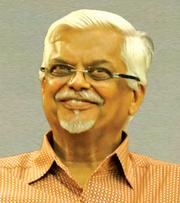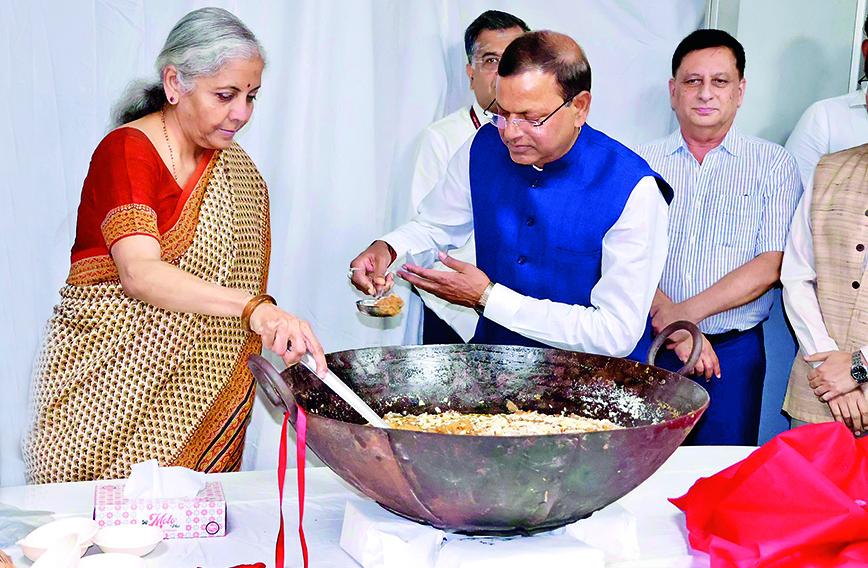
SANJAYA BARU
WHEN Union Finance Minister Nirmala Sitharaman presents her sixth annual Financial Statement and Budget speech in Parliament, she will equal the record set by Morarji Desai. Among the many things that she will take credit for, the foremost may well be the fact that the Indian economy is once again the “fastest growing large economy” in the world. There is much to be said for that record. However, the foundations on which this growth is being built remain weak. The weakest links in the Indian growth story remain the poor performance of the manufacturing sector and the even less impressive performance on the education front.
It was as far back as 2004 when Prime Minister Manmohan Singh constituted the National Manufacturing Competitiveness Council (NMCC) with V. Krishnamurthy as chairman. Krishnamurthy had earned a good reputation as a leader in the manufacturing sector with his leadership at Bharat Heavy Electricals Ltd (BHEL) and Maruti. The NMCC did considerable work and by 2006 produced a document titled “National Strategy for Manufacturing” aimed at boosting the rate of growth of manufacturing in India to a sustained 12 percent to 14 percent per year and increasing the share of the manufacturing sector in national income from around 16 percent in 2006 to 23 percent by 2015. In the event, that did not happen and the share remained stubbornly stuck at 16 percent.
Subsequently, the government took more initiatives and set new goals, hoping to step up manufacturing sector output growth to 14 percent per annum and increase its share in national income to 25 percent by 2022. The policy aimed to create 100 million jobs in the manufacturing sector through investment in skill development, enhancing global competitiveness, promoting new technologies and so on. Despite all the effort, the share of manufacturing remained stuck at around 16 percent.
In 2014 Prime Minister Narendra Modi’s government rehashed the NMCC report and produced a strategy for ‘Make in India’. This time the Make in India plan aimed at increasing the share of manufacturing from 16 percent to 20 percent but shifted the timeline to 2020. Subsequently, the government further shifted the timeline and the goal post by setting a target of 25 percent by 2022. In 2024 we are still stuck at around 16 percent, give or take a percentage point or two. In short, despite sustained efforts by successive governments, India has not been able to trigger a growth spurt in manufacturing. India’s share in global manufacturing is today around 3 percent, compared to China’s 32 percent and the US’s of around 16 percent.
What about education? Here too there has been considerable policy effort culminating in the publication of the National Education Policy (NEP) 2020. There is recognition at all levels of government that India has lagged in investment in education at all levels, especially in primary and secondary education. It has been estimated that total public and private investment in education account for around 6 percent of national income (roughly 3 percent each for public and private). The National Education Policy has set a goal of total public investment, by Central and state governments, of at least 6 percent of national income.
Spending apart, what of the quality of education? Everyone knows that this varies widely across the country and across sectors. The education pyramid is steep, with a narrow summit of globally comparable high-quality institutions at the top and a wide base of sub-standard ones at the bottom. From lack of adequate funding and infrastructure to lack of qualified teachers and, above all, a weak and often corrupt system of evaluation, a host of factors has given the education system a bad reputation.
The best institutions still produce hundreds of thousands of highly talented students while millions end up in the worst ones. What is worrying is the trend towards out-migration of Indian students. Lakhs of them leave home to go overseas for graduate education. Estimates of how much is paid in terms of tuition fees vary from $3 billion per year to $8 billion per year.
In education, too, China has taken the lead over India. While millions of Chinese students do go overseas for higher education, the solid base of primary and secondary education that China has built has enabled it to create world-class institutions that have been able to retain talent. Of the 20 top universities in the world, six are now in China. The remainder are in the western hemisphere.
To my mind, manufacturing and education are the two weak links in India’s growth story that require special attention. Any strategy of growth and development for the medium term must focus on these two areas. A large part of the educational system has been focused on providing skills that cater to the services sector. In fact, the growth of the services sector has contributed to increased investment in such types of education that generate the manpower needed for that sector. There has been, on the other hand, inadequate attention paid to creating skills relevant to a rapidly changing manufacturing sector. As a result, a lot of the training for such employment is now in-house — adding to the cost of manufacturing. Low labour productivity remains a problem for Indian manufacturing.
When the Union Finance Minister, or any of the state finance ministers, presents the annual Budget speech, media focus is almost always on tax measures and incentives. To cater to their diverse audience finance ministers have adopted a ‘thali’ approach to writing their Budget speech — with little bits to cater to varied policy palates. This year Sitharaman could depart from that practice and, instead of spelling out a dozen different priorities, focus exclusively on what the government intends to do to strengthen the country’s manufacturing and education bases.
Sanjaya Baru is a writer and Distinguished Fellow at the United Service Institution of India
Comments
Currently there are no Comments. Be first to write a comment!




